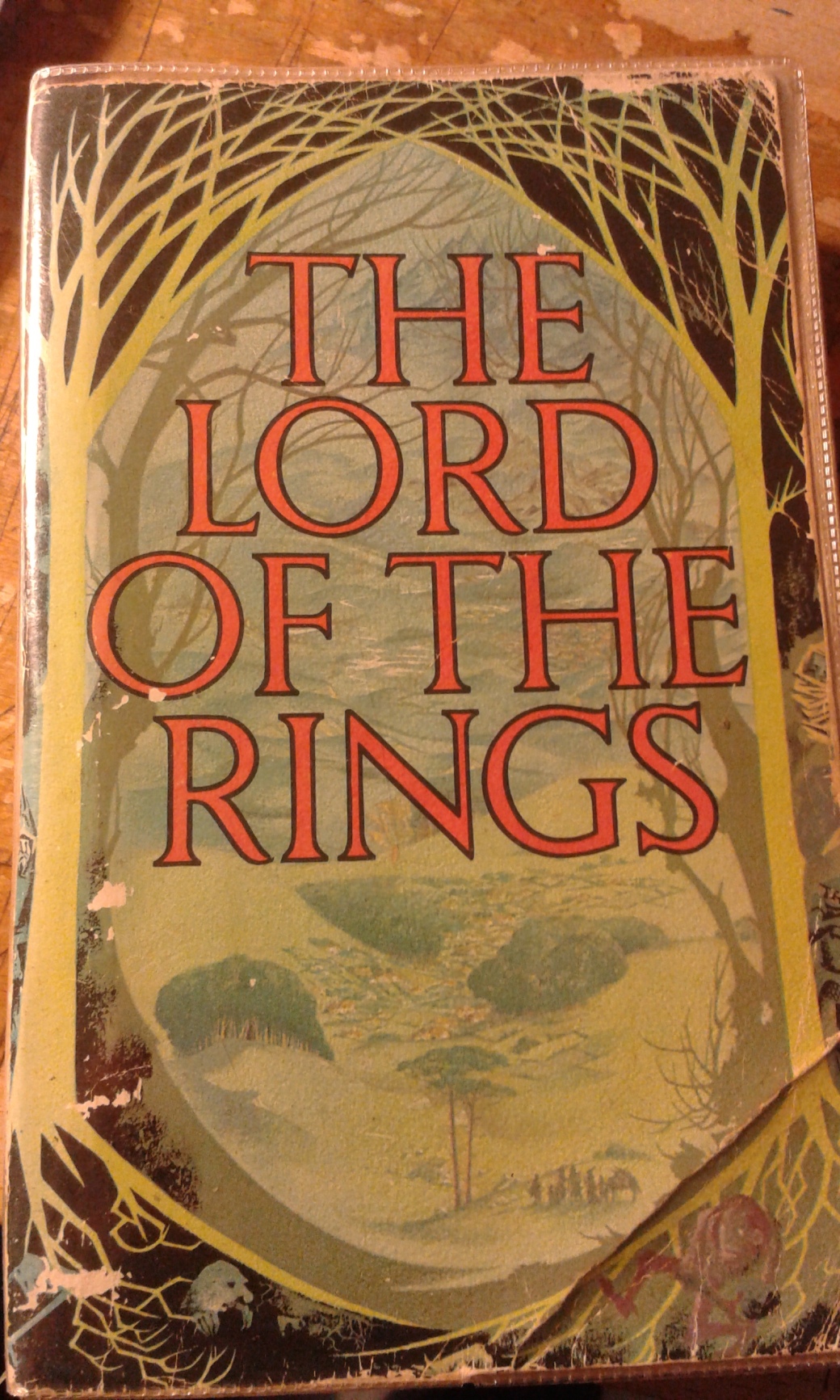
This post was sparked by two things; a suggestion from my daughter that I write about a book that changed me, and Neil Gaiman’s brief (but affectionate) reference somewhere to his “one volume copy of ‘The Lord of the Rings'”. I have a ‘one volume’ copy, it was given to me by a friend with the hopeful inscription ‘I hope you like it’ and it is well read and well travelled – even as far as Iceland (surely a ‘Middle – Earth ish landscape!). I first read it, as Gollum might say “ageses ago” and I have returned to it many times. When the (rightly) celebrated Peter Jackson film adaptations came out I enjoyed them and I wondered whether I could ever return to the books because Viggo Mortensen’s portrayal of Aragorn, and Ian McKellen’s of Gandalf would supplant the characters that were living in my head. But such is the alchemy of this story that, one autumn (for this is surely an ‘autumnal’ book), I re – read the books and found them just as enchanting as the first time.
But ‘a book that changed my life’? Well, yes, and for at least some of the following reasons; first there is the story. Everyone loves a good story and these days there is a great deal of emphasis on the importance of everyone’s story – I read in a theological journal recently about the rediscovery of story in evolving leadership strategies in the church. And this book is a cracking story, one that draws you into its characters and landscape, I have in my mind a remark by the critic Bernard Levin who suggested that the story contained everything a reader would need. I also like the way that Tolkien wrote about the way the tale “grew in the telling” and described posting extracts to his son serving with the RAF in South Africa. Then second, there is the journey and the choices involved every time you set foot outside your door, as Bilbo points out very early in the story; “Its a dangerous business, Frodo, going out of your door….You step into the Road, and if you don’t keep your feet, there is no knowing where you might be swept off to”. This is a journey through a fully realised landscape, but it is also an inner journey as the characters make the choices that allow them to travel with integrity and achieve their destiny.
Third, if you have to undertake a long and difficult journey you will need companions. The Company of the Ring, the Nine Walkers, are chosen to be set against the forces of darkness that will haunt their journey. They represent a lot of things in the story but for me they celebrate fellowship and friendship and all that goes with travelling; good times of laughter and light are set against sacrifice, choice and the threat of overwhelming darkness – OK maybe not whilst going to the shops but I hope you get my meaning! And fourth, there is the struggle. ‘The Lord Of The Rings’ is a story about many things, I think that like all great literature it contains ‘multitudes’, but it is essentially about the dangers of absolute power and the struggle between good and evil. It is also a story about the importance of choice – almost every character in the tale makes important choices – even Sauron, because as Elrond points out “For nothing is evil in the beginning. Even Sauron was not so”.
Of course there is a great deal more that I could say about these books but the thoughts I have offered here are the things that strike me as I read the books. Every time of returning I find something new, and whilst there are many books that can help with understanding the world that Tolkien created, they do not really compare with the books themselves and the way they make me feel. Story, journey, companionship and the endless choices we are called upon to make are things that I see all around me – ‘The Lord of the Rings’ can be read simply as a fantasy masterpiece, but the things it has to say about the business of living remain true in every age, perhaps more so these days. Reading it made me more aware of these things and their importance my own life and so in that sense they can be described as book (s) that changed my life.
(The description of ‘The Road’ by Bilbo Baggins and Elrond’s description of the Company of the Ring both come from ‘The Fellowship of the Ring’. Two books about Tolkien’s world which have been helpful to me are Paul Kocher’s superb ‘Master of Middle Earth’ (Penguin 1974) and J.E.A. Tyler’s ‘The Complete Tolkien Companion’ (Pan 2002). The Kocher book is a good read in its own right, and given the interest in Tolkien I am surprised it has not been reprinted. I should also recommend ‘The Silmarillion by the man himself).





